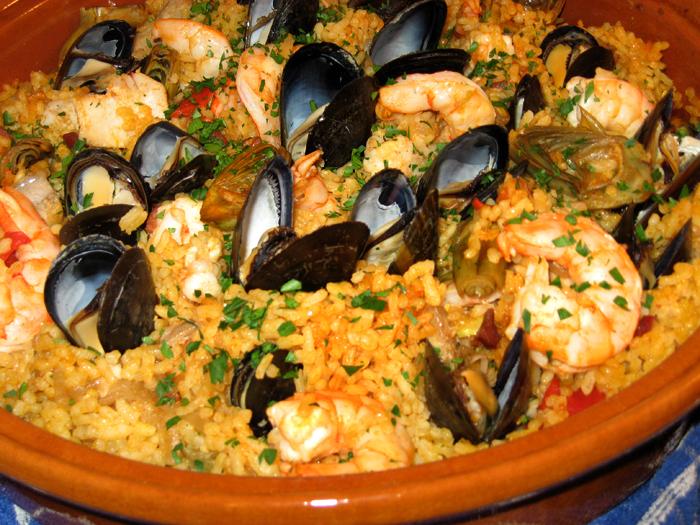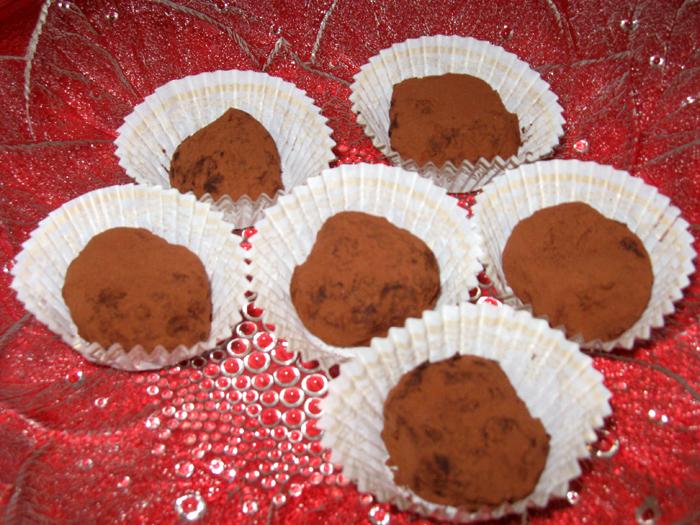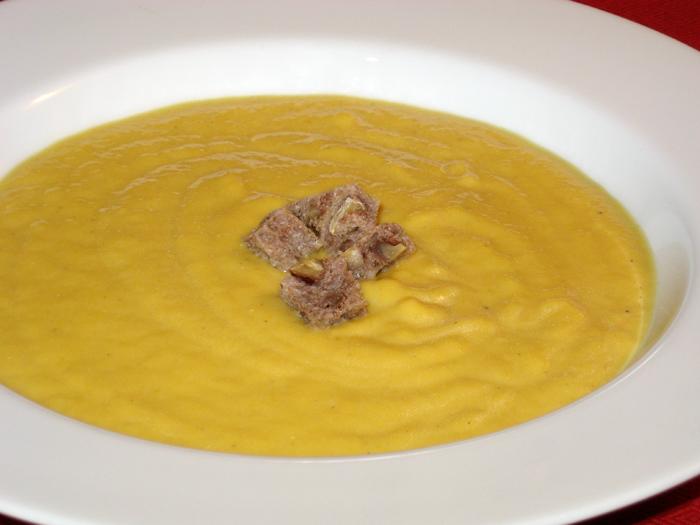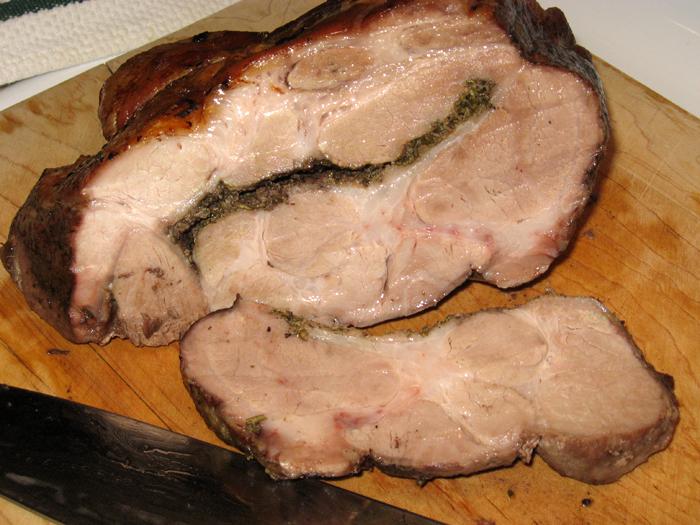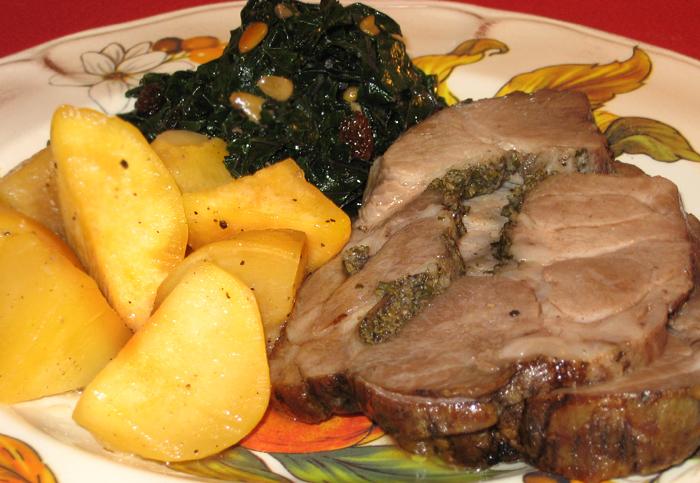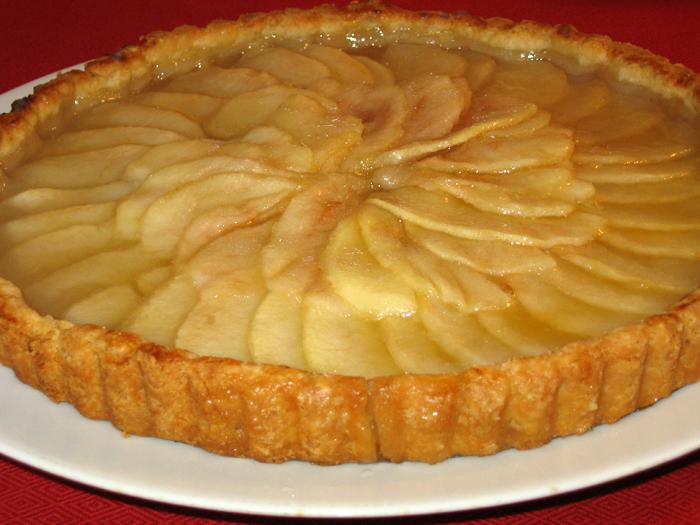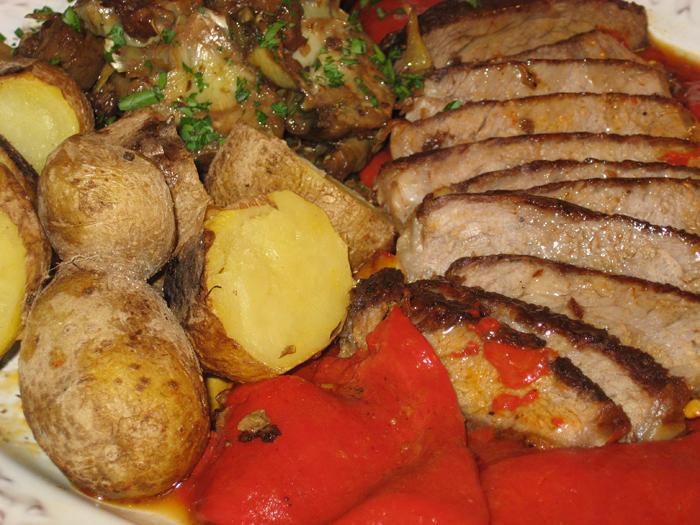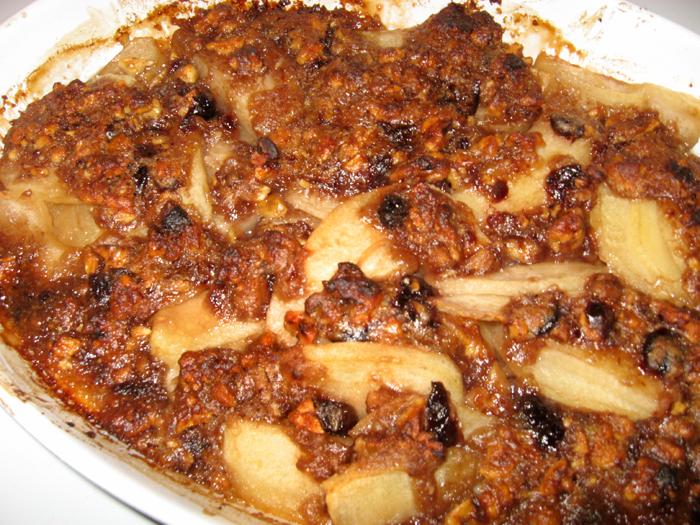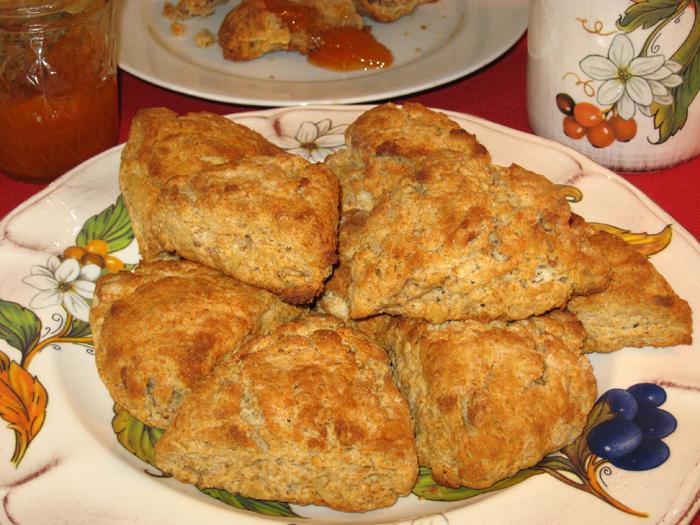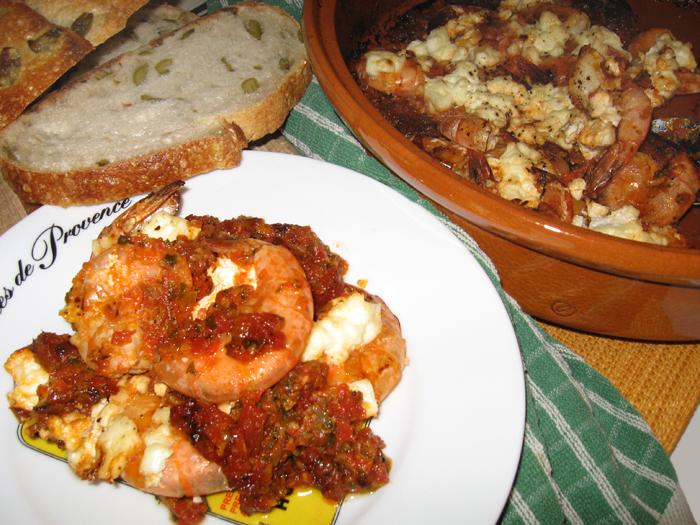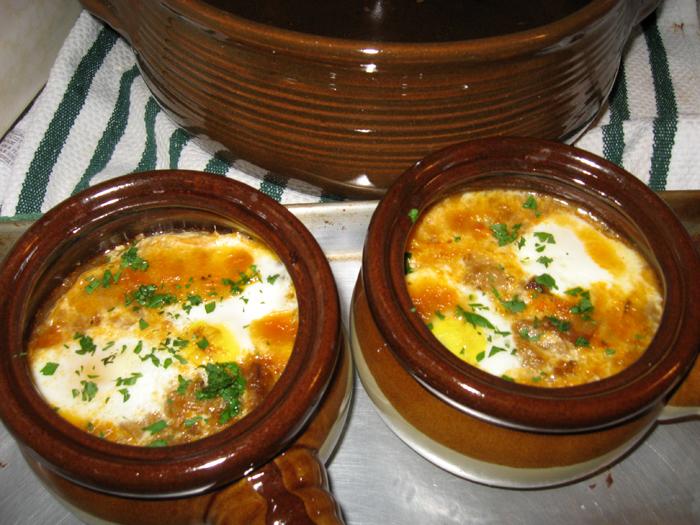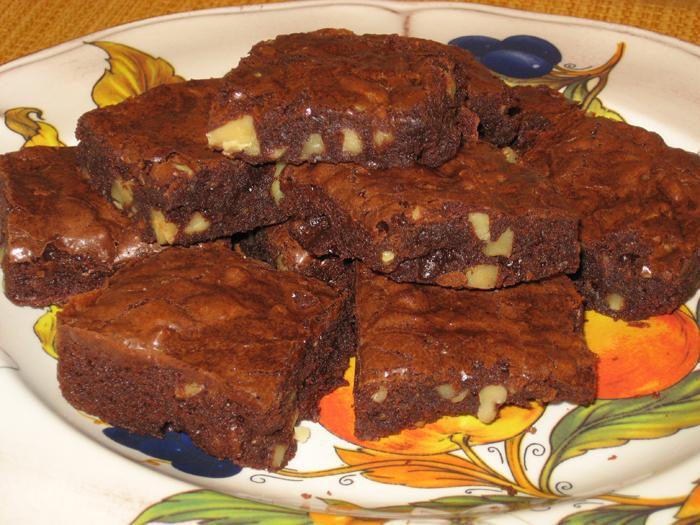-
Posts
1,729 -
Joined
-
Last visited
Content Type
Profiles
Forums
Store
Help Articles
Everything posted by djyee100
-
Occasionally I've seen them for sale at the Berkeley Bowl market. They are sold in the fresh produce section. The supply is erratic. I ate them years ago in an Indian roasted veg stew (somebody else did the cooking). If I remember correctly, they have a mild taste, and they reminded me of artichokes. I've never checked out the ethnic markets here for the vegetable, because I've never been sufficiently motivated. However, if they're grown somewhere in this state, and the Bowl is getting them fresh, there's no doubt in my mind that you could find them in your neck of the woods, probably in an ethnic market. good luck!
-
Mgaretz, Kayb, some good ideas for warming food in this cold weather. Jnash85, that's beautiful ravioli. Kim, as always you set a great table. I'm still doggedly trying to clear out well-aged food items from my freezer, fridge, and cupboards. Today, an impromptu paella of prawns and chicken stock from the freezer, old bomba rice from the cupboard, and canned piquillo peppers from the pantry. I swung by the market for baby artichokes, a little serrano ham, and fresh mussels. Leftover tuna confit with caramelized onions in the fridge--that got tossed in too. It tasted remarkably good with the saffron rice. I cooked the paella in a cazuela, and scorched the bottom because I'm still learning how to cook in that clay pan. But it was easy to avoid the burnt bits during service. And anyway, doesn't that slight smokiness evoke those big pans of paella cooking over wood fires on Spanish beaches? For dessert, Truffles au Cocolat from Alice Medrich's Bittersweet. I uncovered a small packet of leftover ganache when rummaging through the freezer. How could I have forgotten something like that??
-
An interesting experiment. Thanks for taking the time to do the test. Intuitively I agree with your conclusion, but then, I'm no scientist.
-
Jmahl, That's a wonderful Moroccan Lamb Stew. For dinner here, a starter of Squash Soup with Creamy Roquefort, from Paula Wolfert's Mediterranean Clay Pot Cooking. In this soup, the salty assertiveness of Roquefort combines with the sweetness of butternut squash. The croutons were made from some walnut bread. A delicious soup for winter. I know I'll make this one again. A main course of Roast Pork Shoulder with Glazed Turnips, also from Wolfert's Mediterranean Clay Pot Cooking. The pork roast is stuffed with a paste of garlic and rosemary, then slow-roasted. Towards the end of cooking time it's basted with red wine. The pork roast comes out crispy on the outside, juicy on the inside. Served with turnips in a buttery glaze, and kale sauteed in olive oil with garlic, raisins, and pinenuts. The turnips were braised in an earthenware casserole and cooked up full of flavor. Turnip-y flavor, that is. Their pleasant bitterness paired well with the pork. These turnips were a variety I hadn't tried before, called golden turnips. For dessert, Open-Faced Pear Tart, with a honey glaze, from Judy Rodgers' Zuni Cafe Cookbook.
-
Aloha Steve, I suggest reading the section on piecrust in Julia Childs' Mastering the Art of French Cooking. The recipe for "pate brisee" in volume 1. It helped me a lot. I leave the cold dough on the counter and periodically poke it with my finger. When my finger makes a slight indentation, I judge it ready to roll. I roll north-south to flatten the dough and soften it. Turn the dough 90 degrees, do the same big roll. Then I follow Julia's instructions for rolling out dough (start in the middle, roll to the top of the circle, etc.). Glad your pie turned out tasty. That's the important thing.
-
I was taught by the more efficient David Lebovitz to butter the pan, put in the parchment, then flip over the parchment. Voila, the parchment is already greased.
-
The amt of rice in a tea ball probably wouldn't be enough starch. This is only my guesstimate from times I've tried to correct an oversalted dish with starch. How about trying the potato trick and letting us know about it? That might work better. Somebody told me about the potato trick, I've never done it. Peel and slice one or two potatoes, put them in the soup, heat thoroughly, then let it sit for a couple hrs or more. Remove the potatoes. Perhaps wrap in cheesecloth for easier removal? Nickrey is also correct about adding other flavors to disguise the salt. Sour and sweet flavors will modify saltiness. However, you'll get a totally different flavor profile in the soup.
-
I was told that all starches absorb salt upon standing. So I guess that's the origin of the potato trick, i.e., put slices of potato in a too-salty dish, then remove them. If you put potato slices in the soup and let them sit for awhile, maybe that would work. I've added (& kept) rice in a too-salty dish, and that helped. From my experience, you have to put a lot of extra starchy food in the dish to decrease the saltiness. I agree with others here, cook up more lentils and add them to the soup.
-
I have a couple celery roots languishing in my fridge, so I was wondering what to do with them, too. The easiest solution--peel, cut up in chunks, rub with chopped garlic, olive oil, S&P, and roast 'em like potatoes in a hot oven (400 degrees). Serve as a side dish. If you have any potatoes around, cut those up and marinate as above, and roast with the celeriac. Or you can boil/steam some potatoes and celeriac, and mash them together with S&P and melted butter. Potatoes and celeriac are a great combo.
-
C.Sapidus, that was a fine Thai meal you created from the fridge and pantry. Which reminds me, I haven't cooked Thai in awhile and I'm due. For now I'm still in the Mediterranean. Last night's dinner, a perennial favorite, Pot-Roasted Steak with Piquillo Peppers from Paula Wolfert's Slow Mediterranean Kitchen. Served with two side dishes, Artichokes a la Provencale and Creamer Potatoes Cooked in the Devil's Pot, from Wolfert's Mediterranean Clay Pot Cooking. The steak was a tad overdone because I was cooking it in cast-iron rather than my usual stainless. Live and learn. There's another steak in the freezer to play with. I was satisfied with both of the side dishes that I was trying for the first time. Artichokes a la Provencale combines baby artichokes, pancetta, thyme, white wine, stock, garlic and shallots, all braised in a Spanish cazuela. The sauce reduces until it is thick and jammy. I let the dish sit overnight in the fridge, and the flavors melded beautifully. I'm thinking of taking this dish to my next potluck dinner, because it's better if made the day ahead. For Creamer Potatoes Cooked in the Devil's Pot, the potatoes are stovetop roasted with salt in a garlic-rubbed clay pot. Traditionally the claypot is a special item called a diable. I don't own one of those (yet), so I relied on my Chinese sandpot. The potatoes cook up full of flavor--they basically cook in their own moisture-- and they give off a wonderful, earthy aroma. For dessert, Apple, Black Cherry and Walnut Crisp, also from Mediterranean Clay Pot Cooking. This crisp is tart-sweet, with sour cherry jam in the topping. I find it livelier and more interesting than the usual sweet apple crisp. The crisp when it came out bubbling from the oven.
-
Prasantrin, As long as the lard has been rendered properly, I suggest you use the lard. Good lard is even better than shortening. There's a distinctive aroma to old-fashioned lard piecrust that shortening doesn't provide. A chef-teacher I know once did a blind tasting in his baking class. He baked the same pie with a lard piecrust, a butter piecrust, and a combination of lard-and-butter piecrust, and presented all three to his students. The hands-down winner was the lard-butter combo. It wasn't even close.
-
I agree with Heidih. Only soak the noodles until they are firm but pliable, like rubber bands. Are you tossing the noodles with a spatula? Try tossing them a little less. As I've learned from sad experience, overhandling will cause the noodles to break. Also, remember that stirfrying isn't really about stirring. The best technique is to scrape the bottom of the wok with your spatula, lifting the mass of noodles, then flipping the mass over so that the bottom noodles are on top. Let the food cook some more on the bottom, then flip over again.
-
Prasantrin, whenever I've made an all-butter crust it's always slouched a little in the pan. Before baking, you could chill--even freeze--the dough-lined pan, then pop it all into a hot oven. That method seems to help the all-butter crust keep its shape. But the best solution, when the crust has to keep a firm shape, is to use a piecrust recipe that contains both butter (for flavor) and shortening (for texture). I use a combination of butter-shortening piecrust whenever I'm fitting a crust into a tart pan or pie pan. For freeform galettes or smaller hand-size pastries, I go for the all-butter crust. This was the weekend of second attempts for me. I baked the Honey Nut Scones, and one minute after they were in the oven I saw the chopped nuts still on the counter. Oops. No nuts in the Honey-Nut Scones. I made them again today, with the nuts. So now I can testify that these scones taste good with or without the nuts. These scones were something of a surprise. I thought they would be sweet with a strong taste of honey, but they're not. They're like light, buttery whole-wheat biscuits, with a faint taste of honey, really not sweet at all. I served them with jam and hot milky tea.
-
Mendicants? From Wordsmith Talk: Mendicant (alternative Mendiant) is also the name of a small disk or bar of chocolate which has been sprinkled with dried fruit or nuts. Mendiants or Mendicants, I've heard it either way. They are the beggar-monks of the Thirteen Desserts of Provence, yes? If you and your daughter make up that dessert table, your guests will talk about it for years. http://chocolateandzucchini.com/archives/2003/12/mendiants.php Some of the other 13 desserts, like the nougats, will use up those chopped nuts, too. This is one version I learned from chef Charlene Reis: Four Mendiants or Mendicants--The Monks Raisins for Dominicans Almonds for Carmelites Dried figs for Franciscans Hazelnuts for Augustines Four Poors Apples Pears Mandarins Dates Four Riches (choose 4) Confit fruit, like candied orange peel Nougat blanc Nougat noir Conig-Quince Paste Panade-Apple tart (with frangipane) Calisson Candied walnuts Fougasse or Pompe a Noel, to signify breaking bread at the Last Supper You're supposed to take at least one bite of each of the 13 desserts for a prosperous New Year. I would have no problem doing that, myself.
-
Bella S.F., I'm afraid that's the deal with Googlebooks. Looking is digital. All methods of copying are analog (paper, pencil, pen ). Most people jot down enough info so that they can get through the recipe.
-
As always, the food here looks great. An odds and ends kind of dinner this time, as I tried to use up stray ingredients in my fridge, freezer, and cupboards. Prawns from the freezer, one leek and some well-aged tomatoes from the fridge went into Greek Shrimp with Tomatoes and Feta Cheese from Paula Wolfert's new cookbook, Mediterranean Clay Pot Cooking. The shell-on shrimp are baked in a caramelized tomato sauce with chunks of feta cheese. Very tasty, though messy to eat too. Next time I'll shell the shrimp and give everybody an easier time. Serve this one with plenty of good crusty bread. The recipe for Greek Shrimp with Tomatoes and Feta Cheese is available on Googlebooks. Go to Page 20. http://books.google.com/books?id=DwtbDDGaQcIC&printsec=frontcover&dq=Greek+Shrimp+with+Tomatoes+and+Feta+Cheese+paula+wolfert#v=onepage&q=Greek%20Shrimp%20with%20Tomatoes%20and%20Feta%20Cheese%20&f=false Garlic and Egg Soup as Prepared in the Aragon, also from Mediterranean Clay Pot Cooking. A filling peasant soup of broth, bread, garlic, olive oil, pimenton, and poached eggs. You mix the runny egg yolks into the soup and it's divine. This soup is simple to prepare. I like to cook it on weekday nights. The recipe for Garlic and Egg Soup is available on Googlebooks. I prefer to substitute chicken stock for the water. I also add the sliced garlic to the cold olive oil in the pan, at the beginning of cooking time, to prevent it from scorching later. I cooked this soup in an earthenware casserole. On Page 28: http://books.google.com/books?id=DwtbDDGaQcIC&printsec=frontcover&dq=Greek+Shrimp+with+Tomatoes+and+Feta+Cheese+paula+wolfert#v=onepage&q=Garlic%20and%20Egg%20Soup%20&f=false Chocolate from the cupboard, walnuts from the freezer, and I made these great Classic Brownies from Dorie Greenspan's Baking From My Home To Yours.
-
What kind of pan did you cook it in? Metal? Earthenware? What kind of pan does your friend use?
-
A recipe for berbere from an article in Saveur magazine. I've never tried it, but it sounds good. The author is Ethiopian. The article about Ethiopian food in Saveur: http://www.writerati.com/images/images/Ethiopia.pdf More about the author here: http://www.writerati.com/index.html
-
Fresh mature coconut meat is a great flavor in some Indian and SE Asian dishes. Freshly grated coconut also makes a good addition to homemade chocolate ice cream, or other desserts. Well-wrapped, the coconut pieces will last a few months in the freezer. Just let it thaw, then grate it before you use it. That said, I wouldn't use fresh coconut in a typical macaroon recipe. The fresh coconut has a less intense flavor than dried coconut, and the extra moisture in it will probably throw off the recipe. If you're looking for unsweetened dried coconut, try the bulk dept at Whole Foods.
-
No, in Thailand people have the option of eating the soft flesh. The coconut is cracked open enough that you can scoop out the gelatinous insides. I and others in my group didn't particularly care to eat it. Too bland for me. Besides, we were so stuffed with other street snacks that we were never that hungry.
-
I recently found some bomba rice in my cabinet that had been purchased more than 2 yrs ago. I asked the manager of the Spanish Table store if I could still use it. He said yes, just take into account that the rice is drier and thus may need more liquid. Then he said (this gets complicated) that most recipes for bomba rice say add liquid to rice in a ratio of 3:1. He typically finds that bomba requires less liquid than that to cook well. But for my rice, which is older and drier, he said to use the 3:1 ratio. Got that?
-
I'm guessing that unglazed clay is the preferred cooking medium when it's desirable to remove some moisture. Unglazed clay will absorb some moisture so the food is easier to handle (koftes), cooks up crisper (breads), or cooks to a better texture (some of the bulgur recipes). Hmmm...something to think about when cooking in clay. I recently seasoned a 3-qt earthenware casserole from Bram Clayware, which is listed in the Sources of the cookbook. http://www.bramcookware.com/ It's an Egyptian-made pot that goes from stovetop to oven. The seasoning process involves rubbing the entire pot with a clove of garlic. Wha-at?? I couldn't figure out any scientific basis for doing this, but I did it anyway. No sense in provoking the culinary gods (or goddesses). I also seasoned a new Italian mattone. Did I need to buy any more clay pots to cook the recipes I like in this book? No. Did I buy some new clay pots anyway? Yes.
-

My Brief, Busy Stint as a South Indian Sous Chef
djyee100 replied to a topic in India: Cooking & Baking
Wonderful pix and posts. Thanks, Chris. -
I agree, if I saw that ingredient in a recipe, I would use preserved Tianjin vegetable. It's sold cheaply in Asian markets, in a distinctive clay crock. http://en.wikipedia.org/wiki/Tianjin_preserved_vegetable I don't think kimchee is a good substitute, because of its spice. In a pinch, I would substitute old-fashioned sauerkraut, drained and dried well on a paper towel. Tianjin vegetable is more pungent and earthy than sauerkraut.
-

Thai/Vietnamese/Malaysian curry powder recipe
djyee100 replied to a topic in Elsewhere in Asia/Pacific: Cooking & Baking
That link to the NYT recipe doesn't work. A few more details about what you want to cook might be helpful here. A recipe for a curry powder in a Muslim beef dish, in David Thompson's Thai Food, available on Googlebooks (page 241): http://books.google.com/books?id=cgJK8b1t7wUC&pg=PA520&lpg=PA520&dq=david+thompson+thai+food+curry+powder&source=bl&ots=S-S0zQnqI8&sig=i4PCrYD-3K6HmWea3osXZVriSIA&hl=en&ei=fIr0SpvXJIbENvaf-egF&sa=X&oi=book_result&ct=result&resnum=1&ved=0CAoQ6AEwAA#v=snippet&q=curry%20powder&f=false The only other Thai curry powder I know of is a particular curry powder used in Northeastern Thai cuisine, in the Chiang Mai region, for a pork curry called Hung Lay or Hang Lae curry. A recipe for that curry powder here (I haven't tried the recipe myself). http://www.worldtotable.com/2009/09/24/a-weekend-of-fish-curry-and-french-movies-in-chiang-mai/


